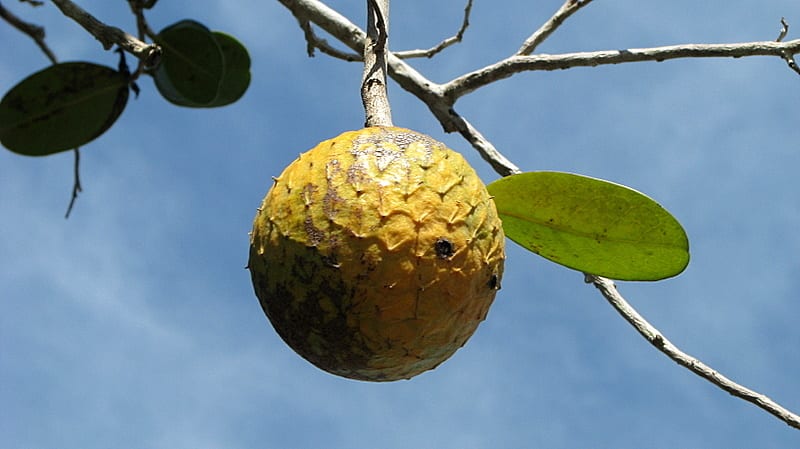
🌿 Morphology
🌞 Growing conditions
🌍 Origin and family
🌾 Uses
Warning: Despite the care taken in writing this sheet, it is essential to cross-reference sources before using or consuming any plant. When in doubt, consult a qualified professional
Permaculture uses
The fruit is edible and can be eaten raw or used in desserts. The plant can be used as a windbreak or hedge in coastal areas. It provides habitat and food for wildlife. No known medicinal uses.
Permapeople description
The Beach Sugar Apple is a plant native to coastal regions of the Caribbean, Central America, and parts of South America. It is a small, semi-evergreen tree that can grow up to 10-15 feet tall. The leaves of the Beach Sugar Apple are dark green, glossy, and oblong-shaped, with a pointed tip. The flowers are small and white, with a sweet fragrance. The fruit of the Beach Sugar Apple is round and has a green, scaly exterior when unripe. When ripe, the fruit turns yellow and has a soft, sweet flesh inside, with numerous small seeds.
Growing conditions for the Beach Sugar Apple include well-drained, sandy soil and full sun exposure. The plant is not winter hardy and may need to be protected from frost in colder climates. To cultivate the Beach Sugar Apple successfully, a grower may need to provide regular watering and fertilization, as well as pruning to maintain the desired shape of the tree.
The fruit of the Beach Sugar Apple is edible and can be eaten fresh or used in cooking. The fruit can be stored by freezing or canning, or it can be dried for later use. In addition to its culinary uses, the Beach Sugar Apple has been used medicinally to treat stomach problems and other ailments. The leaves and bark of the tree have also been used for their medicinal properties.
In terms of its value for wildlife, the Beach Sugar Apple provides food for a variety of animals, including birds and mammals. The flowers of the plant are also a source of nectar for pollinators.
Botanical description
Annona salzmannii is a small tree or shrub, typically reaching heights of 3-6 meters. The leaves are elliptical to oblong, usually 5-12 cm long and 2-6 cm wide, with a smooth, leathery texture. Flowers are yellowish-green, often hidden among the leaves. The fruit is globose to heart-shaped, approximately 5-10 cm in diameter, with a yellowish-green skin covered in small tubercles. The pulp is white, creamy, and sweet, containing numerous dark brown seeds. It's native to coastal regions of northeastern Brazil.
Companion planting
Limited information is available, but it likely benefits from association with other native coastal species that provide wind protection and improve soil conditions. Avoid planting near species that aggressively compete for resources.
Propagation methods
Primarily by seed. Cuttings are possible, though less common. Grafting may be used to propagate desirable cultivars, if any exist.
History and traditions
Traditionally consumed by indigenous populations in Brazil. Locally, the fruit is a source of food and the plant is sometimes used in coastal landscaping. There is no significant historical use documented beyond local consumption.
Usage calendar
Flowering occurs primarily during the wet season, and fruiting follows, typically from late summer to early winter in its native region. Planting is best done during the rainy season to ensure successful establishment.
